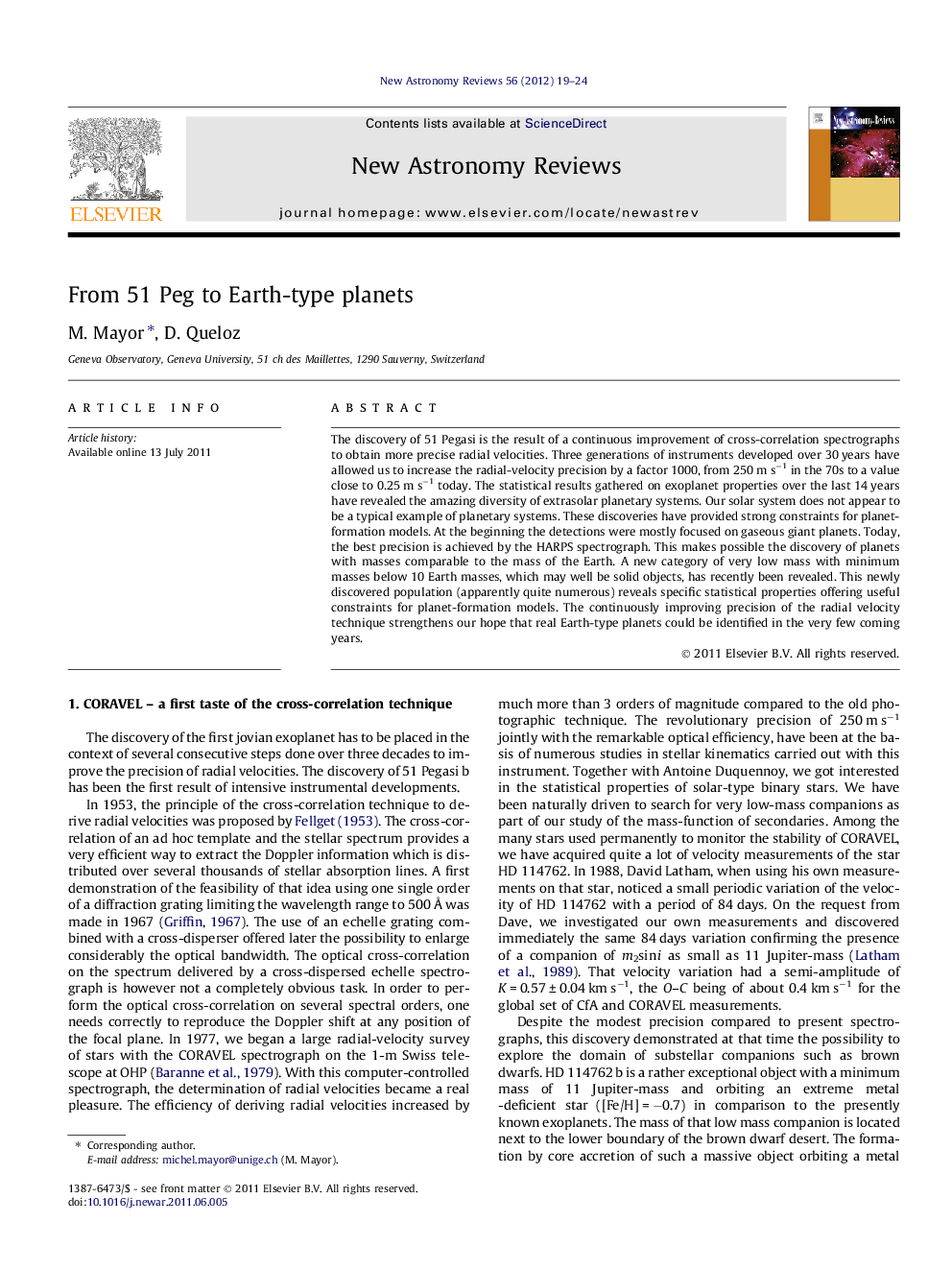| کد مقاله | کد نشریه | سال انتشار | مقاله انگلیسی | نسخه تمام متن |
|---|---|---|---|---|
| 1780013 | 1022133 | 2012 | 6 صفحه PDF | دانلود رایگان |

The discovery of 51 Pegasi is the result of a continuous improvement of cross-correlation spectrographs to obtain more precise radial velocities. Three generations of instruments developed over 30 years have allowed us to increase the radial-velocity precision by a factor 1000, from 250 m s−1 in the 70s to a value close to 0.25 m s−1 today. The statistical results gathered on exoplanet properties over the last 14 years have revealed the amazing diversity of extrasolar planetary systems. Our solar system does not appear to be a typical example of planetary systems. These discoveries have provided strong constraints for planet-formation models. At the beginning the detections were mostly focused on gaseous giant planets. Today, the best precision is achieved by the HARPS spectrograph. This makes possible the discovery of planets with masses comparable to the mass of the Earth. A new category of very low mass with minimum masses below 10 Earth masses, which may well be solid objects, has recently been revealed. This newly discovered population (apparently quite numerous) reveals specific statistical properties offering useful constraints for planet-formation models. The continuously improving precision of the radial velocity technique strengthens our hope that real Earth-type planets could be identified in the very few coming years.
► On the last 40 years a gain by a factor 1000 has been achieved on the precision of stellar radial velocities.
► The discovery of the first exoplanet orbiting a solar-type star (51 Pegasi b) results from these progress.
► The observed diversity of planetary systems had a deep influence on the physics of their formation.
► A rich subpopulation of Super-Earth and Neptune-type planets has been revealed by the HARPS survey.
Journal: New Astronomy Reviews - Volume 56, Issue 1, January 2012, Pages 19–24